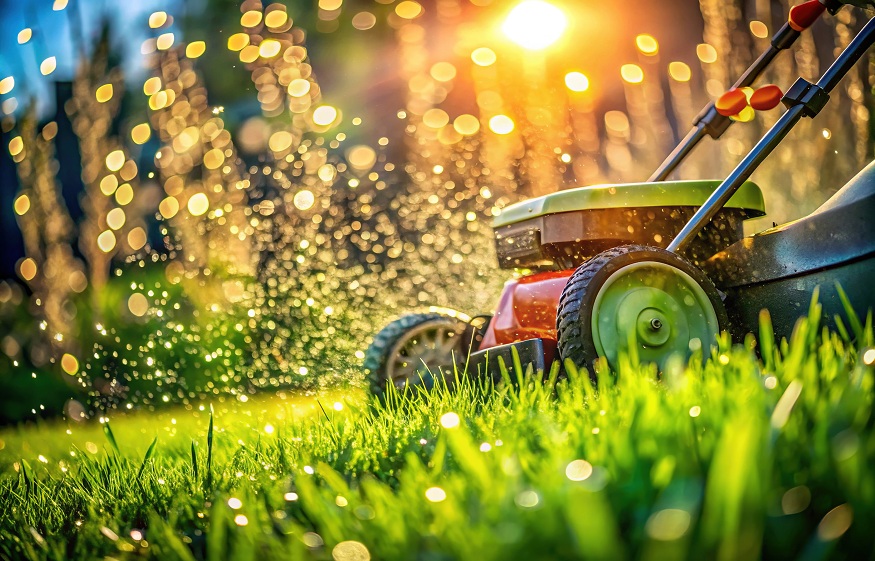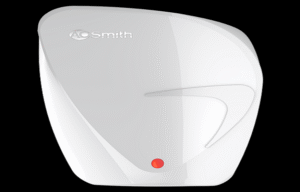Mowing the lawn is one of the most essential tasks for maintaining a healthy and well-manicured yard. But what happens when the weather doesn’t cooperate? Can you mow a wet lawn, or should you wait for drier conditions?
This article explores the potential risks of mowing a wet lawn, provides expert tips for achieving the best results, and discusses how to avoid common lawn diseases and damage.
The Challenges of Mowing a Wet Lawn
Mowing wet grass is far from ideal, and it comes with several challenges. Wet grass blades are heavier and more prone to clumping, which can lead to an uneven cut and a less-than-perfect finish. Damp grass clippings can accumulate in your mower’s deck, leading to clogs that hinder performance and place additional stress on the engine. Additionally, moist conditions make the lawn surface slippery, increasing the risk of slips and accidents, especially if you’re using an electric lawn mower or operating on slopes.
Another concern is the potential damage to your lawn. Wet soil gets compacted easily, which can harm grassroots and lead to dead patches over time. Furthermore, mowing in damp conditions can spread fungal diseases like brown patches and dollar spots, which thrive in moist environments.
While it’s not ideal, mowing wet grass is sometimes unavoidable, especially in regions like Auckland, where consistent rainfall can make it challenging to find a suitable time for lawn care. If you’re unsure about tackling this task yourself, hiring professional lawn mowing services in Auckland can ensure your lawn stays in peak condition, even during wet weather.
Expert Tips for Mowing a Wet Lawn
If you must mow a wet lawn, follow these expert tips to minimize potential harm and achieve the best results:
1. Use Sharp Mower Blades
A dull mower blade can tear wet grass blades instead of cutting them cleanly, leaving your lawn vulnerable to disease and stress. Ensure your lawn mower blade is sharp to achieve a cleaner finish and reduce the likelihood of clumps.
2. Adjust Your Mowing Height
Set your mower to a higher cutting height to avoid scalping the lawn. Cutting too short can expose the roots to excessive moisture and increase the risk of fungal diseases. For cool-season grasses like perennial ryegrass, aim for an ideal mowing height of two and a half to three inches.
3. Mow at a Slower Pace
Wet grass is more challenging to cut, so take your time and mow at a slower pace. This will help prevent turf disturbance and ensure a more even cut.
4. Avoid Bagging Wet Grass Clippings
Wet clippings are more likely to clump and clog your mower. Use a side-discharge or mulching mode instead of manual bagging. This will also help return nutrients to the soil.
5. Choose the Right Time of Day
If you’re dealing with grass after rain, wait until mid-morning when the sun has had a chance to dry the lawn slightly. Mowing shouldn’t be done during heavy rain or when the soil is saturated.
6. Clean Your Mower After Use
Wet grass clippings can stick to your mower’s deck and blades, leading to rust and reduced performance. Use a putty knife to remove clumps, and rinse the underside of your mower after use.
7. Take Proper Safety Precautions
When mowing a wet lawn, safety should always come first. Wear appropriate safety equipment, such as non-slip shoes, and exercise extreme caution, especially around slopes where the risk of slips is higher. If you’re using a corded electric mower, be extra careful to avoid water puddles and ensure the cord is secure to prevent accidents.
Suppose you notice standing water that doesn’t drain after a day or two. In that case, it’s wise to inspect your property for potential plumbing issues, such as broken pipes or poor drainage systems. Addressing these problems promptly can prevent further damage to your lawn and home. Always ensure safety and seek professional help when needed.
Following these tips, you can mow your wet lawn safely and effectively and achieve a healthier, more even cut, even in less-than-ideal conditions.
Preventing Lawn Damage in Wet Conditions
To maintain a pristine lawn during wet weather, add the following steps into your lawn care routine:
- Aerate compacted soil: Regular aeration helps improve drainage and reduces the risk of soil compaction.
- Monitor for lawn diseases: Look for brown spots, dead patches, or other signs of common lawn diseases. Early detection can prevent widespread damage.
- Avoid overwatering: While excessive rainfall is beyond your control, avoid watering your lawn during wet periods to prevent waterlogged lawns.
- Choose the right grass type: Some grasses, like warm-season turf and ornamental grasses, are more resilient to damp conditions than others.
By taking proactive steps to care for your lawn during wet conditions, you can protect it from damage, promote healthy growth, and maintain its lush, green appearance all year round.
Conclusion
Mowing a wet lawn is more than just a chore: it must be carefully done to avoid potential hazards. While decent results can be achieved with the proper techniques and equipment, it’s often best to wait for drier conditions or seek expert advice from professional lawn care operators.
By following the above tips and keeping an eye on weather conditions, you can maintain a lush, green lawn year-round, even in less-than-ideal conditions. And if you’re in Auckland, don’t hesitate to reach out to reputable lawn mowing services in Auckland for assistance with your lawn care needs. Remember, a healthy lawn starts with proper care, so take the time to make informed decisions and prioritize safety and quality in your lawn care routine.






More Stories
A Beginner’s Guide to Creating an Orchard with Professional Tips
A Few Things To Think About Before Preparing Your Raised Garden Bed